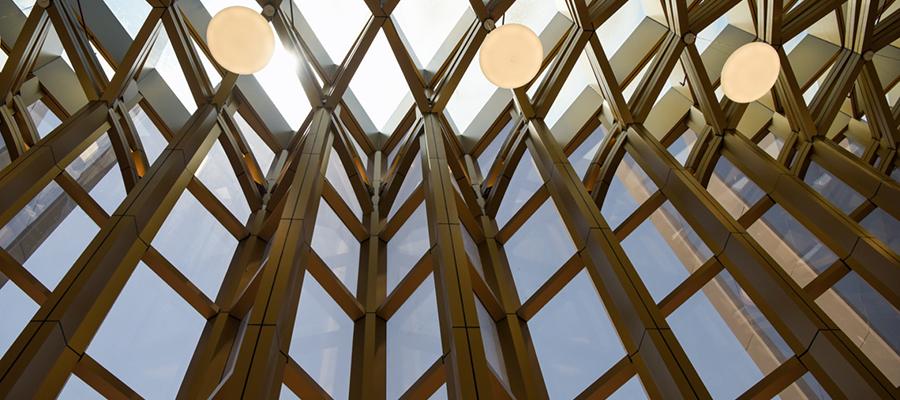- About
- Admissions
- Study at AUS
- Prospective Students
- Bachelor's Degrees
- Master's Degrees
- Doctoral Degrees
- Admission Publications
- International Students
- Contact Admissions
- Grants and Scholarships
- Sponsorship Liaison Services
- Testing Center
- New Student Guide
- File Completion
- New Student Orientation
- Payment Guide
- Executive Education
- Students with Disabilities
- Academics
- Life at AUS
- Research
- Contact Us
- Apply Now
- .

Prominent industry professionals and academics discuss novel photodetector design techniques at AUS
Students and faculty at the American University of Sharjah (AUS) College of Engineering learned about novel design techniques for photodetectors and unprecedented advancements in light absorption efficiency in optical devices during a recent virtual lecture from an innovative California tech start-up company.
Dr. Shih Yuan (SY) Wang, co-founder and Chief Technology Officer of W&Wsens Devices, Inc. in Los Altos, California, spoke about the impact of the novel photodetector—or light-trapping technology—invented by his company on current and future applications in optical systems. Light trapping is the process of capturing of photons for use in applications such as solar cells, sensing, photo-electrochemistry and thermal photovoltaics.
Dr. Taha Landolsi, Professor of Computer Science and Engineering and event organizer, explained the important role photodetectors play: “Photodetectors are sensors that can convert the photon energy of light into electrical signals. This is necessary for various scientific implementations, such as communication; light detecting and ranging, which is a remote sensing method that uses light in the form of a pulsed laser to measure ranges; and advanced bio-imaging and sensors, which relates to non-invasive methods to visualize biological processes in real time; and highly efficient solar cells.”
Among the many applications of photodetectors are making high-resolution maps for use in surveying and archaeology, enabling autonomous vehicles to detect and avoid obstacles, enhancing the artistic value of photographers' artwork, and making mobile phone photography both affordable and high quality.
Dr. Aly F. Elrefaie, Chief Scientist at W&Wsens Devices and visiting professor at the University of California (UC), Davis, addressed the various IEEE standards for short-reach links inside datacenters and how the photon-trapping technique can help achieve the recommended bit rate at reasonable cost. He also shared recently published results of optical systems that are based on this novel technology.
Speaking about the physics of micro-scale structures in photodetectors, Dr. M. Saif Islam, Professor at the Electrical and Computer Engineering department at UC Davis, made the case for their suitability in datacenter interconnects. He discussed how such structures can substantially improve the absorption of light while still offering a high bit rate because of short photo-electron transit times.
Providing a look at the business aspects of company was Lihan Wan, Vice President of Business Development and Strategy at W&Wsens Devices Inc., who reviewed the business model of the startup company and its intellectual property portfolio.
The lecture was organized by the Department of Computer Science and Engineering as part of the AUS College of Engineering lecture series, which connects students and faculty with industry professionals and innovators. More than 70 students and faculty members attended the event.
“Students were highly interested in the subject, which showed through their engagement with the speakers during the questions and answers session. Also, this lecture has proved to be a great opportunity to establish future collaborations between AUS and UC Davis,” said Dr. Landolsi.

